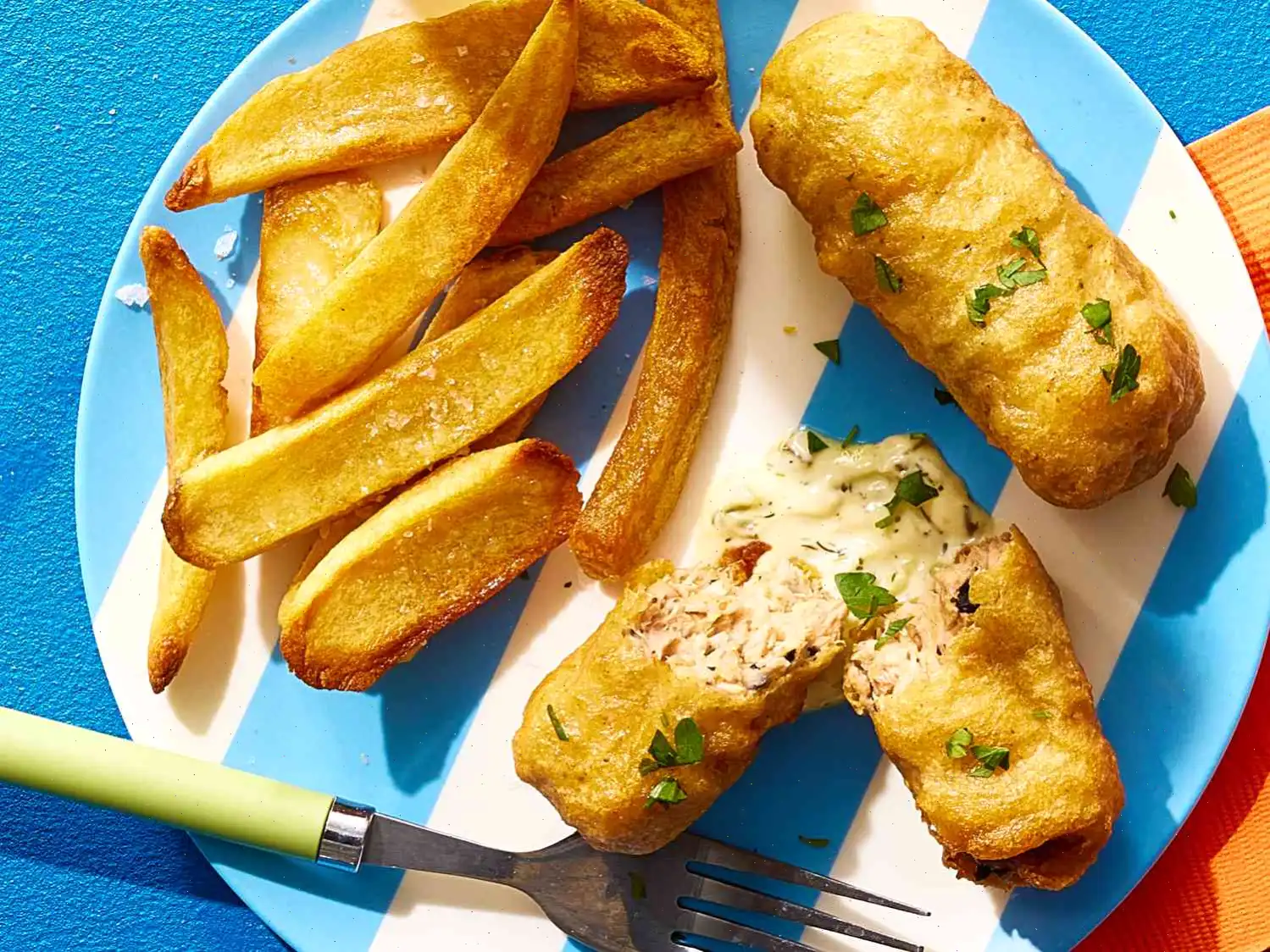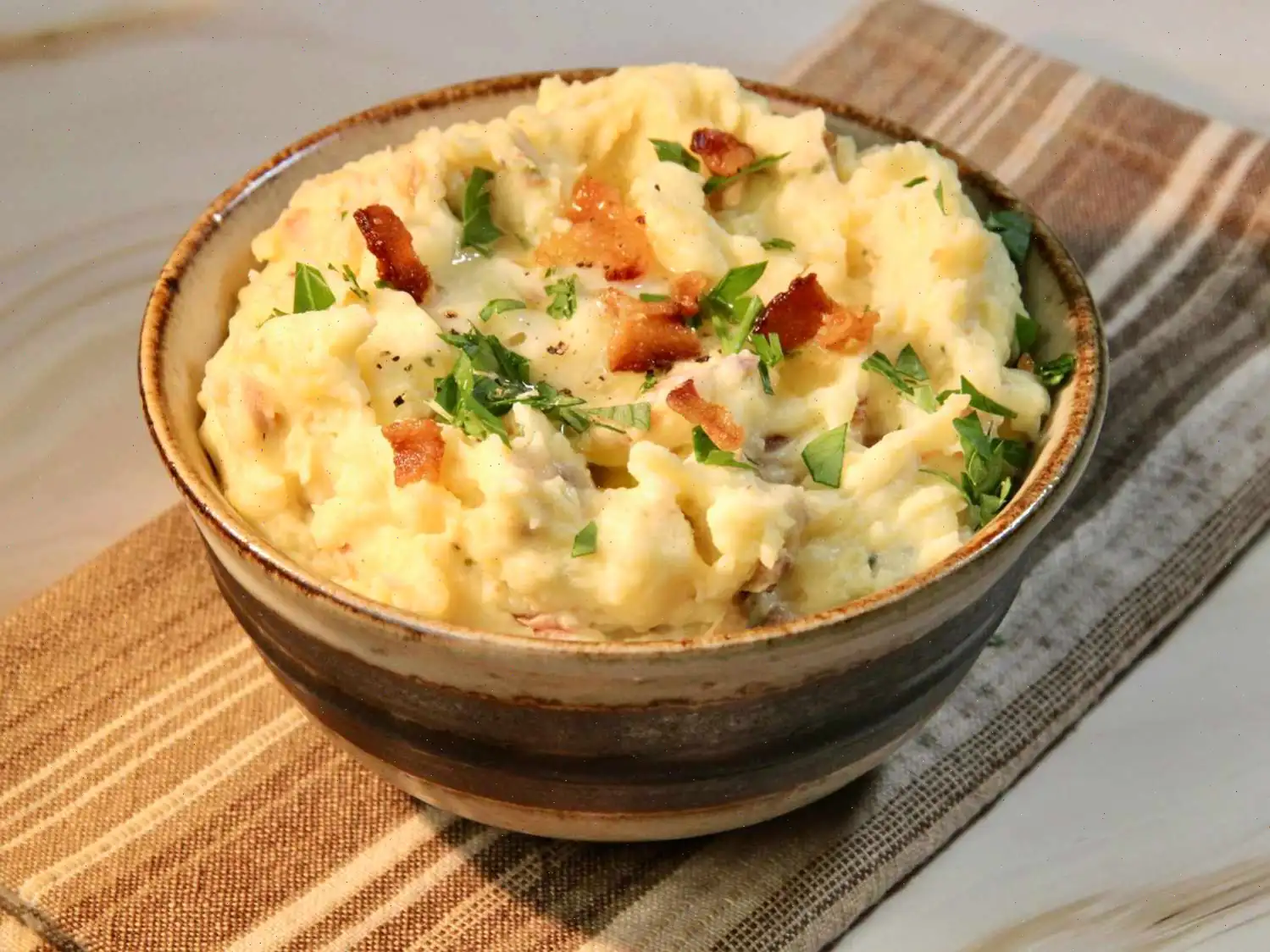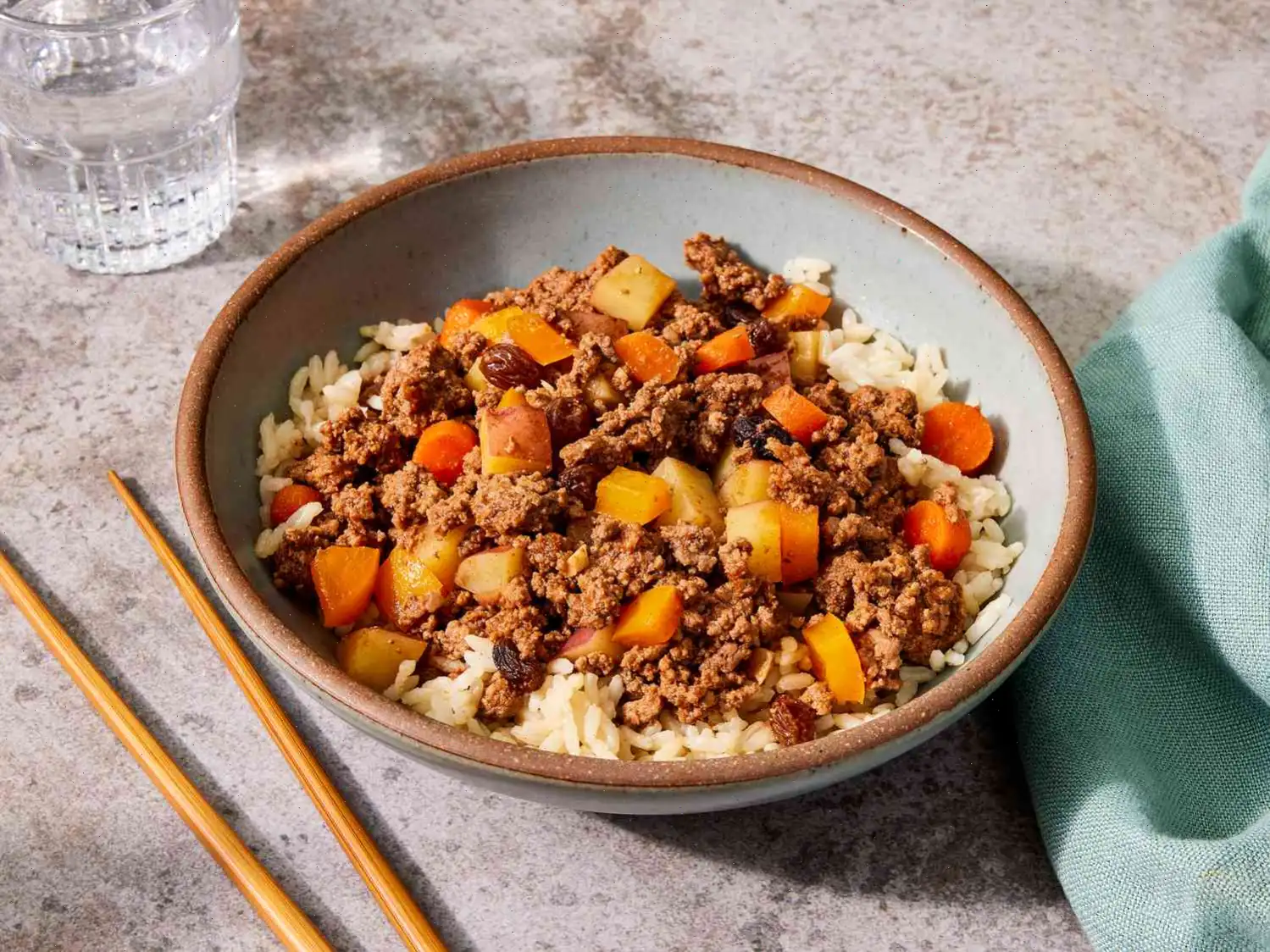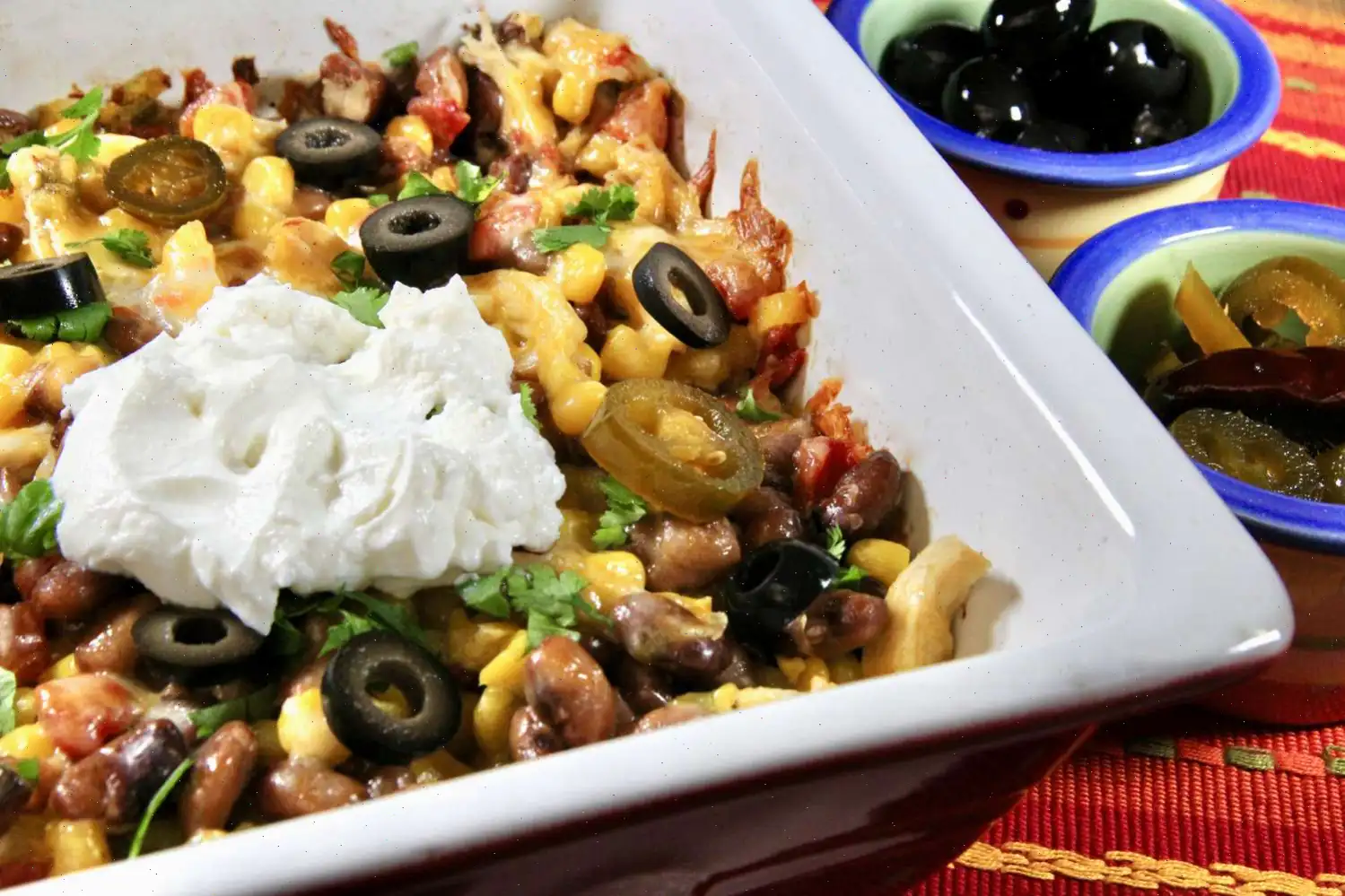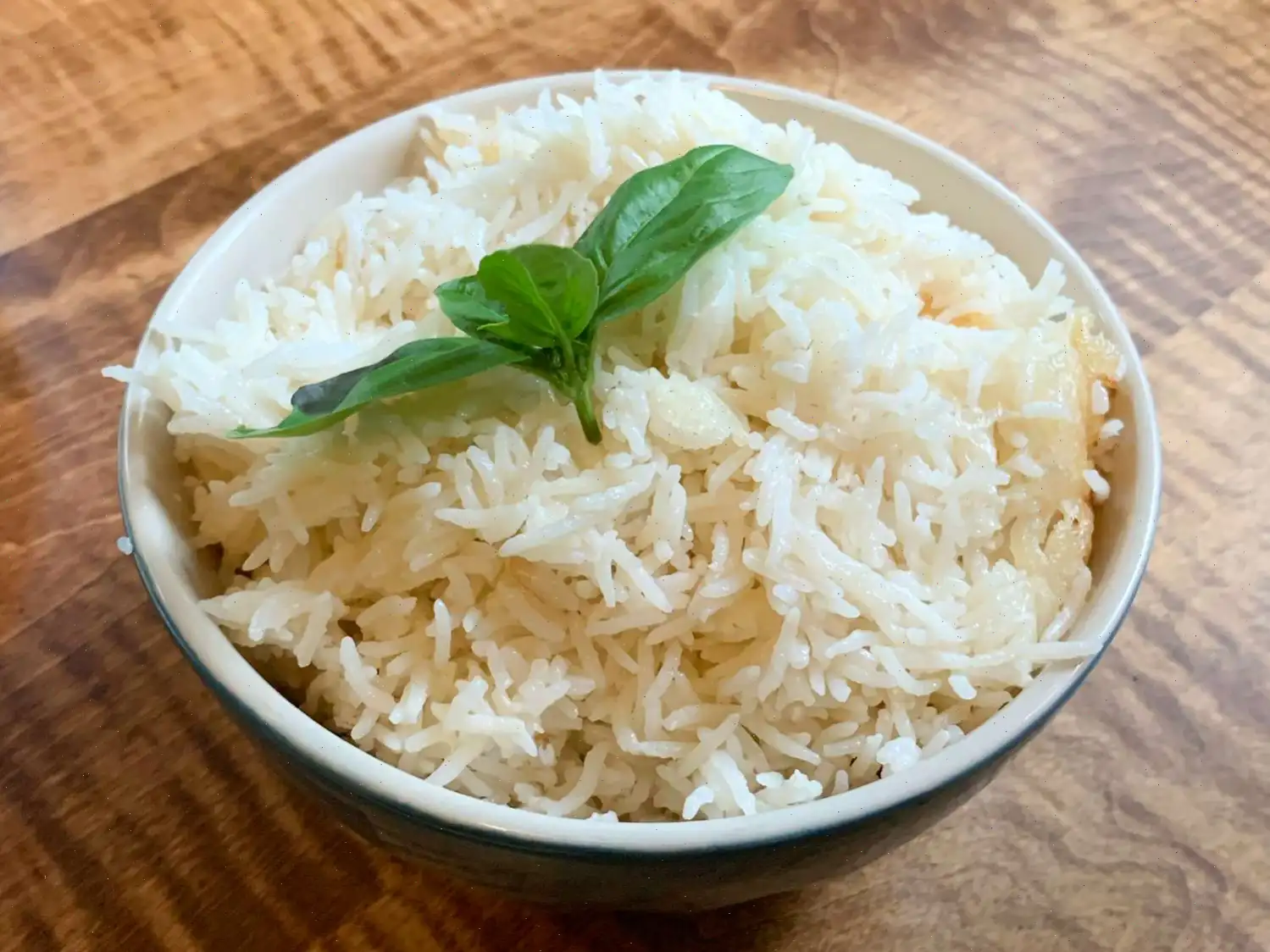
“Fish” and Chips Recipe
Ingredients
- 2 (14-ounce) cans no-salt-added young jackfruit, drained (such as Native Forest)
- 1/2 cup panko bread crumbs
- 2 tablespoons crumbled nori
- 2 tablespoons mayonnaise
- 1 tablespoon Dijon mustard
- 2 teaspoons seafood seasoning (such as Old Bay)
- 1/2 teaspoon salt
- Vegetable oil for frying (about 8 cups)
- 1/2 (28 ounce) package frozen steak fries
- 1 1/2 cups flour
- 1 teaspoon onion powder
- 1 teaspoon garlic powder
- 1 teaspoon paprika
- 1 (12 ounce) bottle light beer or sparkling water (1 1/2 cups)
- 1 large egg
- Chopped fresh parsley for garnish
- Tartar sauce, for serving
- Lemon wedges, for serving
Directions
- For the fish, combine the jackfruit, panko, nori, mayonnaise, mustard, 1 teaspoon of seafood seasoning, and salt in a food processor. Process until combined, leaving some chunks of jackfruit for texture. The mixture should hold together when pressed.
- Shape the jackfruit mixture into 1/3-cup portions, about 3-1/2 inches by 1-1/2 inches, resembling fish fillets. Cover and refrigerate for 1 hour to set.
- In a deep, heavy-bottomed 4-quart pot or deep fryer, pour vegetable oil to a depth of 2 inches. Heat the oil to 375F (190C). Meanwhile, prepare the fries according to the package instructions, keeping them warm.
- For the batter, whisk together the flour, onion powder, garlic powder, paprika, and the remaining 1 teaspoon of seafood seasoning in a medium bowl. Gradually whisk in the beer (or sparkling water) and egg until smooth.
- Dip the chilled jackfruit portions into the batter, turning them to coat all sides thoroughly.
- Working in batches, fry 2 or 3 portions at a time in the hot oil, turning once, for 3 to 4 minutes or until golden brown. Remove the portions from the oil and drain on a paper towel-lined plate. Keep warm.
- Garnish the fried jackfruit with chopped parsley and serve alongside steak fries, tartar sauce, and lemon wedges.
Cooks Notes
- Vegan-ize: Substitute vegan mayonnaise, omit the egg, and serve with malt vinegar instead of tartar sauce.
- Make it Meaty: Replace the jackfruit mixture with 4 (4-ounce) cod fillets. Skip Steps 1 and 2, pat the fish dry, and continue from Step 3. Fry until an instant-read thermometer inserted into the fish reads 145F (63C).
Nutrition Facts (per serving)
| Calories | 1252 |
| Total Fat | 64g |
| Saturated Fat | 7g |
| Cholesterol | 49mg |
| Sodium | 1075mg |
| Total Carbohydrate | 159g |
| Dietary Fiber | 14g |
| Total Sugars | 10g |
| Protein | 15g |
| Vitamin C | 115mg |
| Calcium | 214mg |
| Iron | 6mg |
| Potassium | 1256mg |
The Story Behind Fish and Chips
Fish and chips is a classic British comfort food that dates back to the 19th century. Originally, the dish combined fried white fish with deep-fried potato slices, becoming a staple for working-class families in England. The exact origin is debated, but it is widely believed that fried fish was introduced by Jewish immigrants from Portugal and Spain, while chips, or fried potatoes, had already been popular in Britain. Together, they created a hearty, portable meal that became synonymous with British pubs and seaside towns.
Regional Variations and Local Touches
Across the United Kingdom, fish and chips vary subtly by region. In Northern England, thick-cut chips and cod or haddock are preferred, often served with malt vinegar. Southern coastal areas might favor plaice or pollock and sometimes include mushy peas as a side. In Scotland, you may find the fish breaded instead of battered, while in Wales, a sprinkle of curry sauce over the chips adds a unique local twist. Even in contemporary vegetarian versions, such as using jackfruit and nori, regional preferences influence seasoning choices and presentation.
Distinguishing Features from Similar Dishes
Unlike generic fried fish dishes, traditional fish and chips are characterized by a light, crispy batter and chunky fries, often accompanied by tartar sauce and lemon. The simplicity of the pairing, the particular frying technique, and the use of specific fish types differentiate it from other fried seafood meals. Vegetarian adaptations, such as this jackfruit-based recipe, replicate the flakiness of fish while maintaining the classic flavor profile through seaweed and seafood seasonings.
Where Its Typically Served
Fish and chips are most commonly served in pubs, seaside shops, and takeaway counters throughout the UK. In urban areas, trendy restaurants and vegan cafs now offer modernized versions, including plant-based options like this jackfruit recipe. Traditionally, the dish is wrapped in paper for takeaway or plated with garnishes such as parsley, lemon wedges, and tartar sauce for dine-in experiences.
Interesting Facts and Cultural Notes
- During World War I, fish and chips were one of the few foods not subject to rationing in Britain, helping maintain morale.
- The iconic pairing became so integral to British identity that fish and chip shops became ubiquitous across towns and cities by the mid-20th century.
- The dish inspired regional competitions and festivals celebrating the perfect batter-to-chip ratio, with awards for the crispiest, fluffiest version.
- Vegetarian and vegan adaptations, like using jackfruit, are gaining popularity as traditional recipes are adapted for plant-based diets without losing the familiar texture and flavor.
You can listen to this recipe in AI audio format. Simply click the play button below to listen to the content in a format that suits you best. It’s a great way to absorb information on the go!
FAQ about “Fish” and Chips Recipe
Comments
Catherine Collins
08/22/2023 03:26:26 AM
I followed the editor's suggestion and veganized it, but I made my own vegan tartar sauce instead.


